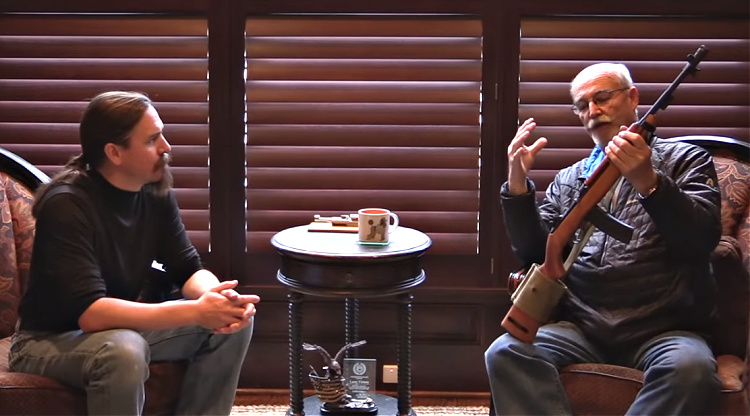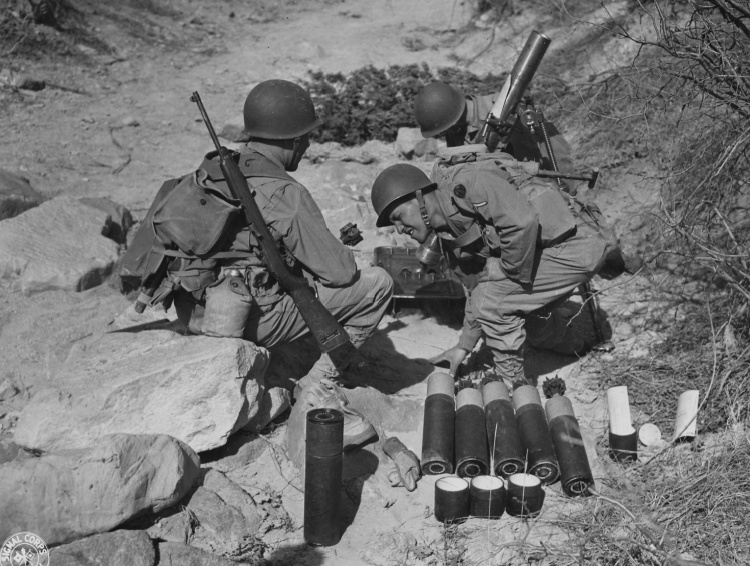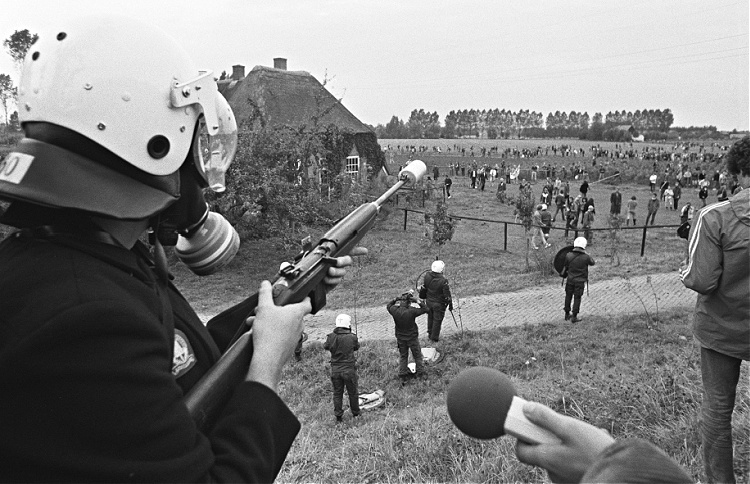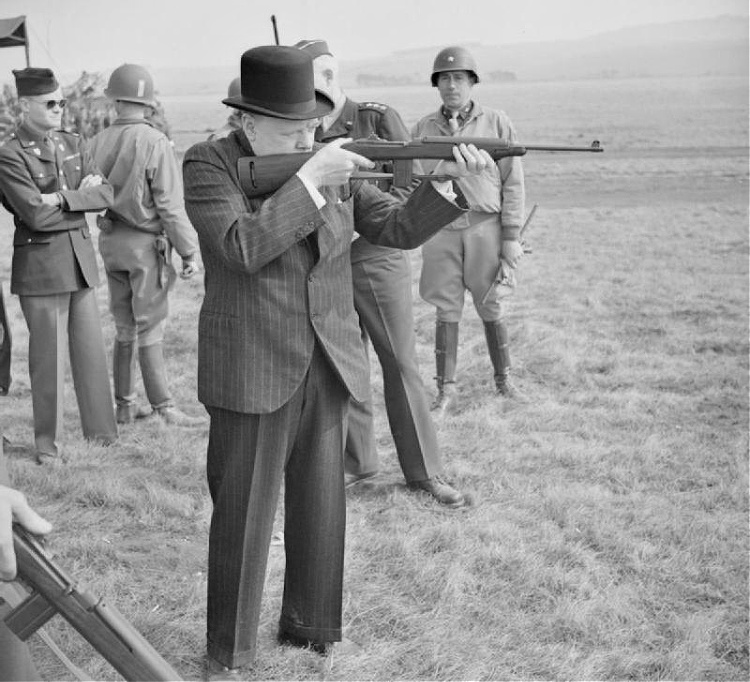I don’t know about you, but I love watching two experts discuss something I’m interested in. I think a conversation is far more interesting, and often more informative than a guy just talking at me. In this case, we have Ian McCollum of Forgotten Weapons talking with one of THE firearms and training gurus: the redoubtable Ken Hackathorn. What makes it even better, for a WWII MILSURP guy like me, is that they go in-depth on the iconic M1 carbine.

Seriously, what’s not to like? Now, I took almost four pages of notes preparing for this article, so I could write some long thing, but I’m gonna try to just hit the high points because my commentary is not going to do justice to the conversation itself. You really should watch the video.
Ian sets up the entire conversation from the start by saying he has never had an M1 carbine that ran reliably: “I always had an occasional feed malfunction or having to rack the bolt periodically, and yet the M1 Ccarbine (henceforth “the Carbine”) has this tremendous reputation from World War II and Korea and Vietnam. They’re very popular guns worldwide.” He then notes that the US made more Carbines than any other firearm during WWII (over six million), and asks, “What is the explanation for how it can kind of have these two natures?”
Ken answers that the Carbine must be placed in its proper historical context, which is a keen insight that he comes back to later. He notes that “There are people who like it and those who think it’s a terrible platform.” Ken then puts his vast knowledge on display, but, as I promised, I’m going to condense it into a series of points taken from the discussion, which, again, you should watch for yourself.
Some M1 Carbine Facts
- It was designed to be issued to support personnel such as cooks, clerks, and drivers. It was also commonly issued to artillerymen and mortarmen.

- It was intended to replace the M1911 service pistol for those people and, “in many ways, it was the original personal defense weapon.”
- Some people complain about the Carbine’s lack of power, but “it was never designed as a primary combat arm.” There’s some of that context.
- Even though it supposedly lacks power, Ian notes that the Carbine has the same energy at 100-200 yards as a point-blank .357 Magnum. “That’s not trivial.” No doubt.
- The Carbine was upgraded late in WWII to the full-auto M2 in response to the German MP44. The M2 was plagued with problems. The cyclic rate was too high and bolt fractures were common. The original M2 was hard to control on full auto but adding a muzzle brake “changed the gun dramatically.”
- The M3 Carbine was a sniper version outfitted with a scope.
- After WWII, the Carbine was shipped all over the world. The Mexican Army, the German Bundeswehr, the South Korean Army, and the Japanese Self-Defense Force were all equipped with Carbines at one point, as was the Vietnamese Army of the 1950s and many early Viet Cong units.

- The Carbine saw widespread use after WWII as a police weapon and often served as the standard patrol rifle.
- Ken says that in the 1960s, the Carbine was the AR-15 of his generation. It was the “cool guy” gun.

In response to Ian’s comment that he wishes he could get a Carbine that works right since it’s “a tremendously light gun…fantastic to carry,” Ken says that it reflects the manufacturing technology of the era. The Carbine was built around a new type of cartridge that, because of the new enclosed gas system, made the Carbine the only WWII firearm that didn’t use corrosive ammo. It was literally a brand-new concept.

It also doesn’t help that the original mags were “the worst flimsy piece of junk.” As we know, the mag is often the failure point for a repeating firearm, so the crappy mags contributed to the negative side of the Carbine’s reputation. The WWII soldiers who carried the Carbine soon learned to replace the mags every week or so. With a new mag, they worked great. Ken also points out that, in the 1940s, especially under the demands of wartime, Americans were willing to accept a level of reliability that “was at a different standard than we are today.” The most common problem with the Carbine was failure to feed. Soldiers just learned to deal with it. “That was just part of the way the world was.”

On a side note, as a WWII historian, I’ve found that Ken’s statement is true. Weapons and gear were engineered to not last much past their expected life span, which, in some cases, was measured in weeks. It was a cost and time-saving measure that allowed the Allies to vastly outproduce Germany, whose engineers and managers never learned that lesson. German stuff was top-notch, but it was far more expensive and labor-intensive to manufacture. That’s a big reason they were literally swamped by Allied material superiority. The Carbine, like the Sherman tank, is an example of “good enough is good enough.”

More highlights from the conversation on the M1 Carbine:
- The Carbine’s reputation has suffered because people buy old guns that are worn out or haven’t been well maintained.
- If you buy a surplus Carbine, it’s a good idea to replace the recoil spring. It could be seventy-plus years old and, as Ken says, “spring technology in wartime was probably not what it could have been.” Your gun will run better.
- Lubricant is your friend. “They have to be run wet. You do that and the reliability goes up.”
- Back in the good ol’ days of the 1960s, you could buy arsenal refurbished Carbines from the Director of Civilian Marksmanship (DCM) for about 20 bucks. Ken still has his. If you run across someone selling a DCM gun, it might be worth a look. I doubt if you’ll get it for 20 bucks though.
- Shoot quality ammo. Many MILSURP guns aren’t terribly picky. This one is.
- Another thing that has hurt the Carbine’s reputation is the poor quality of the commercial reproductions from the 1960s. Be careful of those. A bunch were made to arm the anti-Castro Cubans, but since that really didn’t work out, there are lots of them out there.
- Speaking of those guns, Ken notes that of the wartime surplus guns, the ones made by Inland were “the stars.” But the Inland name was placed on some of the commercial guns, and they are not quality firearms. Make sure you know the difference. Also, wartime Carbines made by Winchester are valued by collectors but were not the best quality.
- One of Ken’s favorite Carbines (he appears to own several) is one made by the Rock-Ola Juke Box Company. It was arsenal refurbished and the arsenal inspector was the legendary Elmer Keith. Pretty cool.
- Ken says the 15 round mags are more reliable than the 30 rounders. If you have 30 rounders, downloading them to 25 or 26 will make them work better. He also recommends the new Korean mags that are coming into the country. They are high quality.

So, there are the high points, but as I said, my commentary cannot replace the actual conversation. Have I mentioned that you should watch it for yourself? Ian and Ken do a great job covering some of the ins and outs of this classic weapon and it’s just a pleasure to listen to them. Ken tells some cool stories that I have not had the space to include here.


